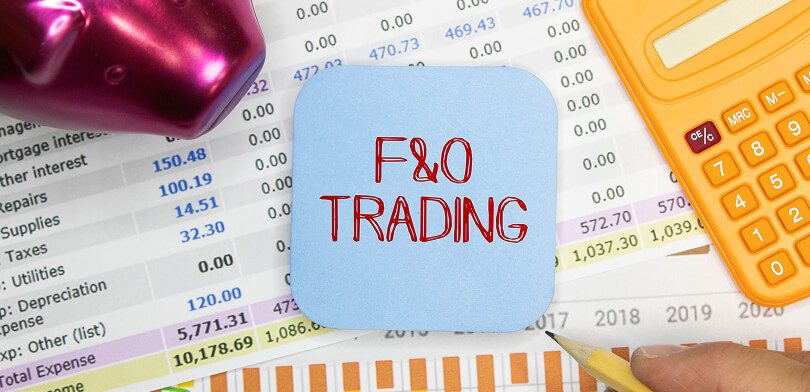Options trading involves a nuanced understanding of various valuation concepts, notably Time Value and Intrinsic Value. These concepts are fundamental in determining an option’s worth and play a crucial role in formulating trading strategies.
Mastering these values is integral for options traders to make informed decisions, hedge risks, and optimise their investment strategies effectively. Let’s dive deeper to explore more!
Topics Covered:
- Explaining Intrinsic Value
- Unravelling Time Value
- How does Time Value work in Options?
- How to calculate the Intrinsic value of Options?
- Before You Go..
Explaining Intrinsic Value
In options trading, the intrinsic value stands as a pivotal metric in assessing an option’s worth based on its relationship with the current market price of the underlying asset. It represents the concrete value an option holds if immediately exercised.
For call options, the intrinsic value is determined by comparing the current market price of the underlying asset to the option’s strike price. If the market price surpasses the strike price, the call option holds intrinsic value, calculated as the difference between the two prices. In this scenario, exercising the call option would yield an immediate profit equivalent to the intrinsic value.
Similarly, for put options, the intrinsic value is calculated by contrasting the strike price to the current market price of the underlying asset. If the market price falls below the strike price, the put option contains intrinsic value, computed as the disparity between the strike price and the market price. This implies that exercising the put option at that moment would result in an immediate profit equal to the intrinsic value.
Conversely, if the market price aligns with the strike price or fails to exceed it (for call options), or if the market price matches or surpasses it (for put options), the option is considered to have no intrinsic value. In such cases, the option is primarily composed of time value, which represents the potential future worth of the option based on factors like time until expiration, market volatility , and other market dynamics.
Understanding intrinsic value is crucial for options traders, as it influences decision-making regarding the execution or holding of options. Traders may use intrinsic value as a guiding factor in crafting strategies, such as exercising options or adjusting positions based on market movements, thereby maximising potential profits and managing risks effectively.
Step into the world of Futures & Options — Open your Demat account
Unravelling Time Value
Time value in options represents the component of an option’s premium that reflects the possibility of the option gaining intrinsic value before its expiration. Unlike intrinsic value, which corresponds to the immediate worth of an option if it were exercised, time value is an estimate of the option’s potential to become more profitable as time progresses.
Additionally Read: Understanding Demat Account
The time value of an option is influenced by various factors, prominently including the time remaining until the option’s expiration, market volatility, prevailing interest rates, and the underlying asset’s price movements. As time passes and an option approaches its expiration date, the time value gradually diminishes, eventually converging to zero at expiration, leaving only options if any exists.
Options with a longer time until expiration typically hold higher time values since there is a greater possibility of the option’s price being influenced by future market movements. Conversely, options with shorter durations to expiration tend to exhibit lower time values because there is less time for the underlying asset’s price to fluctuate significantly.
Volatility is another crucial factor impacting time value. Higher market volatility generally elevates an option’s time value since greater price fluctuations increase the likelihood of the option achieving profitability before expiration.
Additionally, prevailing interest rates play a role in determining time value. Higher interest rates usually result in higher time values as they contribute to greater opportunity costs associated with holding options.
Understanding time value is integral for options traders in formulating strategies and managing risk. Evaluating the interplay between time value and other factors aids traders in making informed decisions about when to enter or exit positions, optimising potential gains, and mitigating losses based on market dynamics and the options’ time decay.
How does Time Value work in Options?
Time value in options quantifies the premium an option holds beyond its intrinsic value. It reflects the potential for an option to gain intrinsic value before expiry. This value is impacted by the time remaining until expiration, market volatility, prevailing interest rates, and underlying asset price changes.
For investors and traders, understanding and managing time value is crucial for effective options trading. By analyzing these factors, traders can make informed decisions about when to buy or sell options contracts to optimize their investment strategies. Additionally, investors can benefit from the convenience of open demat account, which provides easy access to options trading and other financial instruments, streamlining the execution of trades and portfolio management.
As an option nears expiration, its time value diminishes, ultimately fading to zero at expiry. Options with greater time until expiration generally possess higher time values, while higher volatility or interest rates tend to increase time value. Traders aim to capitalise on time value by making strategic decisions to benefit from price movements before an option’s expiry.
How to calculate the Intrinsic value of Options?
The intrinsic value of an option is calculated differently for call and put options . For call options, the intrinsic value is determined by subtracting the current stock price from the option’s strike price, only if the result is positive; otherwise, the intrinsic value is zero.
Conversely, for put options, the intrinsic value is derived by subtracting the option’s strike price from the current stock price, considering only positive values, or it’s zero if negative. This calculation method reflects the immediate profit obtainable from exercising an option at the current market price.
Recommended Read: Valuation of shares
Before You Go..
Understanding the intrinsic value and time value in options trading is paramount. Intrinsic value indicates immediate profit potential through exercising options, while time value estimates future profitability. Mastering these concepts empowers traders to strategise effectively, leveraging market dynamics for optimal gains and risk management.






